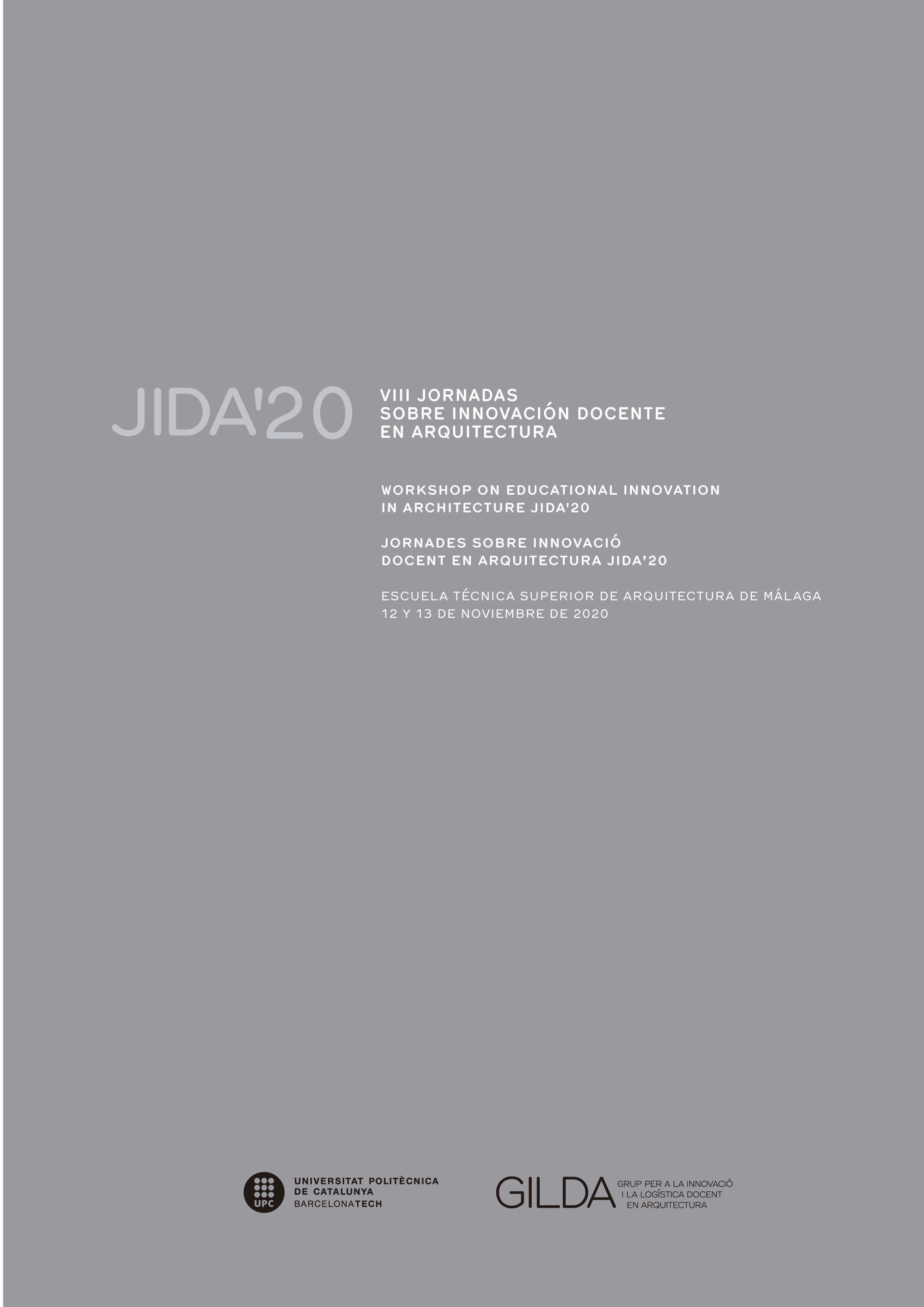Zoé enters the house. Biology in architectural training
DOI:
https://doi.org/10.5821/jida.2020.9330Abstract
The knowledge in the formative stage for the later architectural practice is rigorously updated due to the preparation and self-demanding of the teaching staff but, structurally, a radical change of approach occurs with difficulty in the renewal of the curricula. A disciplinary logic far removed from the current problems conservatively focuses on teaching and, by extension, on the profession and, beyond that, on the very definition of Architecture. During this 21st century, social, economic and environmental challenges have not managed to promote substantial changes in the idea of what an architect should be for their societies. The current pandemic crisis is leading to the extension of the training of architects with knowledge of biology. Since 2010, the Master in Sustainable City and Architecture at the ETS Architecture in Seville has been teaching its students to design with living matter and to evaluate its consequences, in a transdisciplinary experience that aims to be a pioneer as a model for future curricular updates, including in Bachelor's degrees.
References
AAVV, Libro Blanco. TÃtulo de Grado En Arquitectura (Madrid: Aneca, 2001), I <https://doi.org/10.1017/CBO9781107415324.004>
AGAMBEN, G, (2001) Medios Sin Fin: Notas Sobre La PolÃtica, Valencia: Ensayo (Pre-Textos)
AÃT-TOUATI, F., “Nous Ne Sommes Pas Le Nombre Que Nous Croyions Être†– Relire Les Microbes de Bruno Latour’, AOC Media - Analyse Opinion Critique <https://aoc.media/critique/2020/08/18/nous-ne-sommes-pas-le-nombre-que-nous-croyions-etre-relire-les-microbes-de-bruno-latour/> [accessed 19 August 2020]
BRESSANI, M. (2007) “Observations on Architectural Biology: The Gen(H)Ome Projectâ€, en Log, 9.9 119–27
D’ALEMBERT, J L R, (1860) Discurso Preliminar a La Enciclopedia (Madrid: Editorial Calpe, 1954)
DUQUE, F, (2001) Arte Público y Espacio PolÃtico, Madrid: Arte y Estética Ediciones Akal
MAYORAL GONZÃLEZ, E. (2015) Arquitecturas Biosintéticas. La Acción Arquitectónica a Través de La IngenierÃa de Lo Vivo y Lo No Vivo. Málaga: Recolectores Urbanos
MAYORAL GONZÃLEZ, E., and TAPIA MARTÃN, C. ‘Extended biotechnological bodies within a posthumanistic framework’, in McLuhan Galaxy Conference: understanding media today : Barcelona, May, 23rd-25th, conference proceedings, 2010, pp. 562–78 <http://dialnet.unirioja.es/servlet/articulo?codigo=4804264> [accessed 16 April 2015]
MERTINS, D. (2007) “Where Architecture Meets Biology: An Interview with Detlef Mertinsâ€, University of Pennsylvania Departmental Papers, 110–31
SZULKIN, M, J MUNSHI-SOUTH, and CHARMANTIER, A. (2020) Urban Evolutionary Biology Oxford University Press
TAPIA MARTÃN, C. (2020) “La Ciudad Bajo El Signo de Afrodita Pandemosâ€, Geopolitica(S), 11 189–208 <https://doi.org/10.5209/GEOP.69315>
TAPIA MARTÃN, C., ed., (2015) MCAS, Pensamiento HomeoteÌcnico : Por Una EÌtica de Las Relaciones No Hostiles y No Dominadoras, ColeccioÌn Conferencess [CSS] ; 005 Sevilla: Recolectores Urbanos
TAPIA MARTÃN, C. (Coord). (2020) De Forma et Vita. La Arquitectura En La Relación de Lo Vivo Con Lo No Vivo. Sevilla: Athenaica
TAPIA MARTÃN, C., and RODRIGUES ALVES, M. ‘Deus Ex Machina. Formar En Arquitectura Para Un Mundo Que (Aún) No Existe’, in A: Garcia Escudero, Daniel; Bardà Milà , Berta, Eds. ‘V Jornadas Sobre Innovación Docente En Arquitectura (JIDA’17), Escuela Técnica Superior de Arquitectura de Sevilla, 16 y 17 de Noviembre de 2017’., 2017, pp. 32–43 <https://doi.org/10.5821/jida.2017.5193>






















